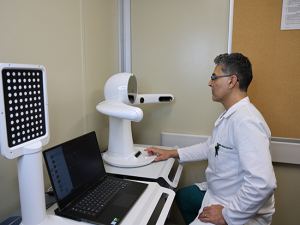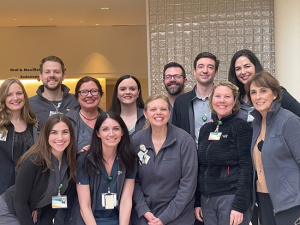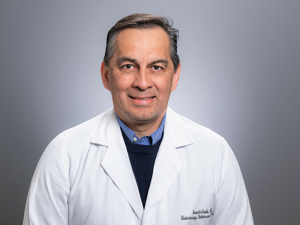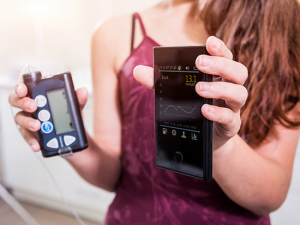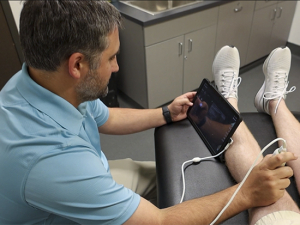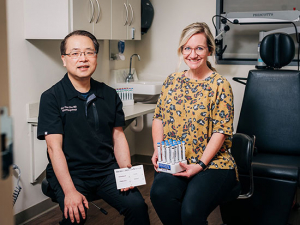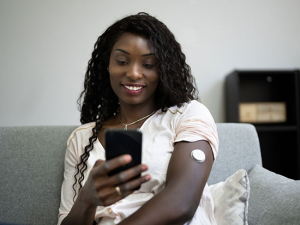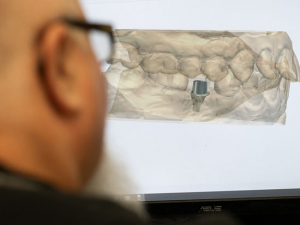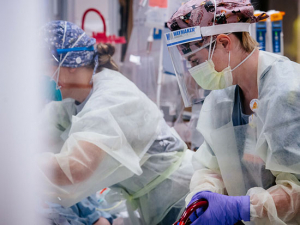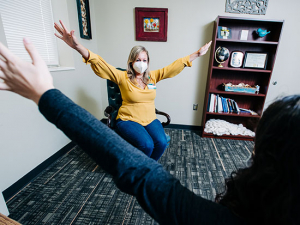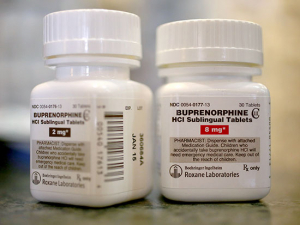by Emma Shepard
 Fernando Ovalle, M.D.Usually, a diabetes diagnosis begins with a label: either Type 1 or Type 2 diabetes. Patients with diabetes are typically assigned one of these two labels and then treated accordingly.
Fernando Ovalle, M.D.Usually, a diabetes diagnosis begins with a label: either Type 1 or Type 2 diabetes. Patients with diabetes are typically assigned one of these two labels and then treated accordingly.
But UAB endocrinologist Fernando Ovalle, M.D., says diabetes experts are now pushing for more specific diagnoses. The benefits include more precise treatments for patients, fewer doctor visits and potentially reduced health care expenditures.
Ovalle is an associate director at the UAB Comprehensive Diabetes Center and the director of the Division of Endocrinology, Diabetes, and Metabolism.
No two patients look the same
“No two diabetes patients looks the same, even if they both have Type 2 diabetes,” Ovalle said. “A growing number of clinicians, researchers and diabetes organizations are pushing to start adding subtypes of diabetes to patients’ initial diagnoses.”
Type 1 diabetes was previously known as juvenile diabetes, since a substantial number of those with Type 1 were typically recognized in childhood. However, clinicians no longer use that term since around 50 percent of those with Type 1 diabetes are diagnosed after age 20, according to Ovalle.
Type 2 diabetes normally develops later in life and can be related to lifestyle choices like diet and exercise. A family history of Type 2 diabetes plays a large role in who is predisposed to the disease.
In all diabetes forms, pancreatic beta cells are either not performing at full function or are largely destroyed. Since pancreatic beta cells produce insulin, which is responsible for regulating blood sugar, this means that those with diabetes often require supplemental insulin to control their blood sugar. The pancreas does secrete more than just insulin, but insulin injections are most commonly used to treat those with diabetes.
Not a new concept
The idea of diabetes subtypes is not a new concept. In 1997, the American Diabetes Association, or ADA, released an Etiologic Classification of Diabetes, listing over 40 syndromes, diseases or genetic abnormalities that can contribute to the development of diabetes.
The ADA classifications were a stark reminder that while many look at diabetes as a binary, there are many ways to develop the disease, without even beginning to consider the many ways that diabetes might then present itself in each person, Ovalle says.
Once someone is diagnosed with diabetes, it is important for the care provider to consider the individual treatment, potential complications and outcomes — all of which can look very different person to person. Common diabetes complications include heart disease, circulation issues, kidney damage and eye problems.
In 2018, a group of researchers, primarily from Sweden, published their research on diabetes subtypes and how subtypes are associated with specific outcomes.
The novel research showed that those who were grouped into subtypes, based on their form of diabetes, shared similar risks of specific diabetes complications. For instance, one diabetic subtype in their research had significantly higher risk of diabetic kidney disease than the other subtypes.
Treating patients more precisely
“If we have a better handle on what sort of outcomes to expect with patients within a specific diabetes subtype, we would be able to treat these patients more precisely,” Ovalle said. “For instance, if someone was in a subtype prone to kidney disease but not diabetic retinopathy, we would recommend that they see a nephrologist more often than an ophthalmologist.”
This kind of information could help ease the inundated health system by weeding out unnecessary specialist visits or emergency room visits, Ovalle adds. Fewer visits could save the patient time, paying for gas, finding parking, and waiting at the doctor's office.
In addition to fine-tuning specialist visits, knowing a patient’s subtype could also help a diabetes care team tailor insulin and other drug treatments as well. Ovalle says that this kind of personalized precision treatment would lead to better care and fewer complications for those with diabetes.
In fact, in 2019, the World Health Organization published an updated classification of diabetes mellitus, listing over 20 subtypes of diabetes.
Ovalle hopes the fact that diabetes organizations are acknowledging and classifying diabetes subtypes will help spread the knowledge to physicians everywhere and promote understanding of disease diversity.
“Right now, governing bodies for diabetes, such as the WHO, Centers for Disease Control and Prevention and ADA are deciding on a universal language for these subtypes so that we do not have a nomenclature mismatch,” said Ovalle. “Once we have some more research and solidified categories, we will be able to diagnose diabetes patients more specifically and accurately.”
“We’re really talking about tailoring the entire treatment strategy for someone with diabetes and making it more precise,” said Ovalle. “The more information we continue to gather about each subtype of diabetes, the more we will be able to help arm our patients with as much information about their own health as we can. It is really empowering.”
